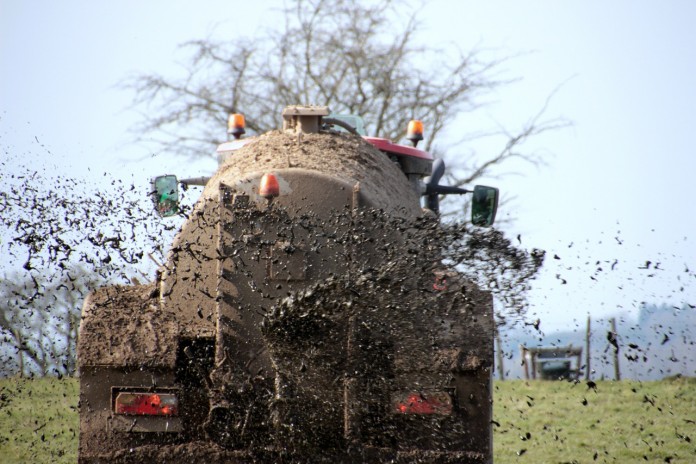Once corn has been chopped for silage, those harvested fields often mark the beginning of the fall manure hauling and field application season for most dairy farms.
Do you have a management plan in place to keep employees and family members safe around manure pits, lagoons and manure storage structures as manure is agitated, hauled and applied?
There are several hazards associated with liquid manure storage structures. Just in the past year, I have come across the following tragic headlines:
“Another dairy worker drowns in manure pit,” a story detailing two drownings, one in February of 2015 in Washington and another in February of 2016 in Idaho.
“Man, 55, Dies After Being Found in Dairy Farm’s Manure Pit,” an AP press account of a mid-August 2016 tragedy in Michigan.
Harmful gases
All manure storage structures have harmful gases associated with them. The gases of concern include: ammonia, carbon dioxide, methane and hydrogen sulfide.
It is important to realize that these gases are produced as a result of normal bacterial action and the decomposition process. The presence of these gases is measured in terms of parts per million (ppm).
To give that some perspective; consider that 10,000 ppm is equal to 1 percent. The volume and concentration of these gases will naturally increase during the agitation process that is necessary in order to remove; haul and land apply the manure nutrients.
While open air manure storage structures such as lagoons generally are less hazardous in terms of harmful gas concentration buildups compared to confined space structures, those same gases are present and family farm members and employees need to be aware of the potential harmful effects.
The environmental or atmospheric conditions in and around manure storage structures such as lagoons can be safe on some days and deadly or health threatening on others.
Drowning
Perhaps the greater danger associated with open air manure storage structures is danger from falling in and drowning.
Vehicle operators may accidentally drive into/fall into manure lagoons because the edges appear to be solid or edges are invisible due to surrounding vegetative growth.
Individuals working or walking at ground level around storage structures may stumble or slip into the manure.
Safety and management practices that should be followed and in place around open air manure storage structure include:
- Post warning signs.
- A couple of places to obtain signs include: www.gemplers.com/accident-prevention-signs and www.mysafetysign.com/farm-safety-signs.
- Fence around the structure.
- Make sure manure pit and lagoon boundaries are visible. Keep the area around the pit/lagoon mowed and free of tall weeds/grasses and prevent unsafe access.
- Lifesaving equipment such as a reaching pole, ring preserver on a rope, or even just a rope, should be stationed at various points around the structure.
- Education and annual review of potential hazards and emergency rescue response.
- Phone numbers of local fire department/rescue squad posted nearby.
- Never send a single family member or farm employee in to do work or maintenance around the structure alone. A second person should always be on-site in a watch/emergency response role.
Moving parts
Don’t overlook the danger of moving parts on machinery and equipment as the manure structure is agitated and manure is loaded into hauling equipment.
Manure pumps, agitators and PTO shafts all have the potential to snag and draw in loose clothing, long hair, jewelry, fingers or feet with tragic consequences.
The importance of understanding the potential hazards of a liquid manure storage structure along with the development and annual review of an emergency response plan can’t be overstated.
Each year we hear of farm accidents where someone has entered a confined space and been overcome by gas or fallen into a manure lagoon and been drowned.
Too often these tragedies are compounded by deaths of others who have acted impulsively in trying to rescue the person and ended up perishing as well.
Take some time now to establish a set of safety management practices regarding manure storage structures.













